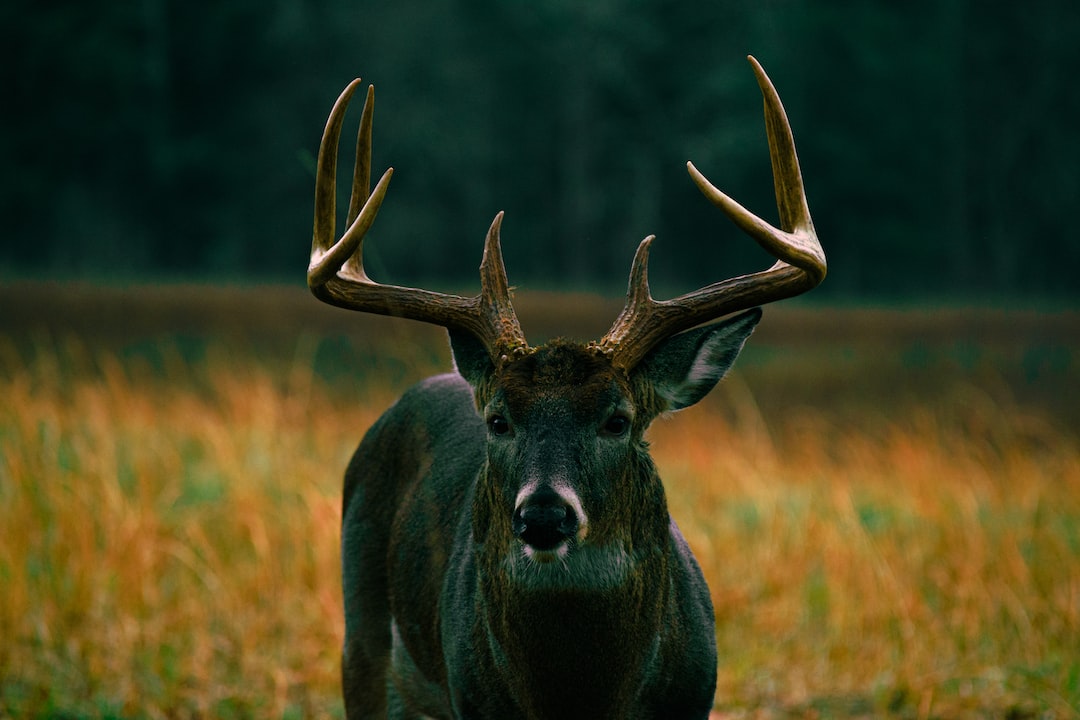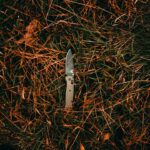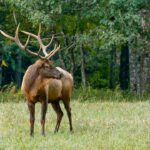Are you looking to sharpen your deer hunting skills?
Whether it’s learning how to hunt mule deer or whitetail, identifying good hunting spots, or understanding the best pre-hunt preparation and during the hunt tactics – our comprehensive guide on deer hunting tips has got you covered.
From gear selection all the way through post-hunt care and maintenance, we’ve put together a complete resource for hunters of any skill level.
Gear for Deer Hunting
When it comes to deer hunting, having the right gear is essential. For optimal success, it’s important to wear comfortable and weather-resistant clothing that offers camouflage protection and allows for movement.
Layering clothes with breathable fabrics like wool and synthetic materials are best for keeping warm while allowing for mobility. Camouflage patterns are also a must as they help you blend into your surroundings and stay undetected by game animals.
For weapons, there are several options available depending on preference and local regulations. Rifles in .223 caliber or larger will provide enough power to take down large game such as deer, but shotguns can also be used if necessary with a slug.
Make sure whatever weapon you choose is properly sighted in before heading out on a hunt so that when it’s time to take aim at an animal, you have confidence that your shot will hit its mark.
For any hunting trip that may necessitate long-range shots, accessories like rangefinders, binoculars, scopes and bipods/tripods should be taken along.
A good set of boots with strong traction will help keep you steady while walking through rough terrain and allow for quick maneuvering when needed too. Lastly, don’t forget about scent control products which can go a long way in helping mask human odors so that deer won’t smell you coming from miles away.
Properly outfitting yourself with the right gear is essential for a successful deer hunt. Having the right gear, you can now focus on locating an ideal hunting spot that meets your requirements.
Identifying Good Hunting Spots
When it comes to identifying good hunting spots, location is key. You want to look for areas with plenty of deer activity and a diverse terrain that offers both cover and open space. Various environs, such as fields, meadows, copses, marshes and woodlands (or a blend of these), can be advantageous too.
It’s also important to consider the local weather conditions when scouting for a spot to hunt deer. Wind direction can play an integral role in your success; you don’t want to set up shop downwind from where you think the deer will be coming from.
Additionally, if there has been recent rainfall or snowfall in the area this could affect how much noise you make while moving around which may alert nearby animals of your presence.
Terrain should also be taken into consideration when looking for a good hunting spot. Look for areas that have some elevation changes which provide different vantage points and offer better visibility so you can see farther distances than what is possible on flat ground alone.
If possible try to find an area with some water sources like streams or ponds since these are often frequented by wildlife due to their need for hydration throughout the day/night cycle .
To ensure a successful hunt, it is essential to consider the terrain and weather conditions of your chosen spot. With proper pre-hunt preparation such as scouting the area, setting up blinds and stands, and understanding deer behavior, you can increase your odds of having an enjoyable hunt.
Pre-Hunt Preparation
Before hunting, it is essential to survey the region and become acquainted with its topography. Knowing where deer are likely to be found and how they travel can help you plan your hunt more effectively. Look for tracks, rubs, scrapes, beds and other signs of activity that indicate deer have been in the area recently.
Take note of any water sources or food plots nearby as these can attract deer during certain times of year. Also take into account wind direction when scouting an area as this will affect how you approach a stand or blind on your hunt day.
Setting Up Blinds and Stands:
Setting up stands or blinds in areas where there is good cover from both wind and sight can make all the difference when hunting deer. Make sure to set them up well before opening day so animals don’t become accustomed to their presence before you start hunting them.
If possible, place stands near natural funnels such as creeks or trails which will force game through tight spaces making it easier for hunters to spot movement from their perch.
Additionally, using scents like doe urine around your setup may also increase your chances of success by attracting bucks looking for does in estrus seasonally throughout fall months
Understanding the behavior of deer is key when planning out a successful hunt strategy. Knowing why they move at certain times of day, where they bed down during midday hours and why they come back again later in evening hours can help hunters better predict patterns which gives them an advantage over game while out on hunts.
Being able to identify different types of sign such as tracks left behind by buck’s hooves along trails leading into thickets provides clues about animal movements throughout wooded areas helping hunters decide if particular spots might be worth checking out further on future trips.
Finally, being aware that scent control plays a huge role in success rates when hunting should not be overlooked either – wearing clothing specifically designed for scent reduction purposes is highly recommended especially if aiming for trophy sized bucks.
Prior to a hunt, making ready is indispensable for bagging deer; it can determine success or failure. Therefore, understanding the behavior of deer and using calls and scents during the hunt are key tactics to consider when out in the field.
During the Hunt Tactics
For successful deer hunting, various tactics may be employed, such as using calls and scents, spotting and stalking techniques, and wind direction. Utilizing calls and scents, spotting and stalking techniques, and wind direction can all increase your chances of harvesting a deer.
Using Calls and Scents:
Using various calls such as rattling antlers or doe bleats can help attract bucks in the area. You should also consider using scent-based lures to draw them in closer for a better shot. These lures mimic natural smells like doe urine or estrus secretions which will draw bucks in from farther away than you would otherwise have access to them.
Spotting and Stalking Techniques:
Spotting is an important part of successful deer hunting because it allows you to identify potential targets before they spot you first. When advancing, progress cautiously and remain watchful for any indications of activity in front of you to evade startling nearby creatures before getting close enough for a precise shot.
Also remember that when stalking through dense brush or tall grasses it’s best to stay low so as not to alert anything nearby with silhouettes against the sky line above them.
Using the right calls and scents, along with spot-and-stalk techniques and taking advantage of wind direction can greatly increase your success during a hunt. Now that you’ve acquired your kill, it’s important to properly clean and store your weapon as well as field dress the deer for post-hunt care and maintenance.
Post-Hunt Care and Maintenance
After a successful hunt, proper maintenance of equipment is essential for future hunts. This includes cleaning and storing your weapon, field dressing the kill, and disposing of waste responsibly. Taking these steps will ensure that you are prepared for future hunts.
Cleaning and Storing Your Weapon Properly:
After a hunt, it is essential to clean and store your weapon properly in order to maintain its condition. Once the gun is cleared of any ammunition, begin by cleaning all components with a suitable cleaner.
Once unloaded, use an appropriate gun cleaner on all surfaces of the firearm including barrels, stocks and actions. For extra protection against rust or corrosion consider using an oil-based lubricant on exposed metal parts such as bolts or triggers after they have been cleaned with solvent-based cleaners.
Finally be sure to store your weapons safely away from moisture or extreme temperatures when not in use; this will help preserve their quality over time.
Field Dressing Your Kill:
Field dressing is one of the most important steps after a successful hunt as it helps prevent meat spoilage by removing internal organs quickly which can help keep game fresh longer during transport home from hunting grounds.
To begin field dressing deer start by making a circular cut around the anus while being careful not to puncture intestines or other organs then remove everything inside until only skeletal remains remain – remember to wear gloves.
It’s also important to check for signs of disease like lesions or tumors prior to cutting into carcass; if found dispose of carcass immediately according to local regulations so as not spread potential diseases further among wildlife populations in area where hunted
FAQs in Relation to Deer Hunting Tips
What is the best method for hunting deer?
The best method for hunting deer is to use a combination of scouting, knowledge of the local terrain and vegetation, as well as utilizing proper gear.
Scouting involves familiarizing yourself with the area you will be hunting in; this includes locating food sources and potential bedding areas.
Additionally, knowing what type of vegetation is most common in your region can help identify prime locations for deer activity.
Finally, using quality equipment such as scent-blocking clothing and binoculars are essential when hunting deer effectively. By combining these elements together one can successfully hunt deer on any given day.
What are some tips for hunting?
1. Always follow all safety protocols and wear the appropriate clothing for your environment.
2. Stay abreast of hunting regulations in the area to ensure you are compliant with any changes that have taken place since your last visit.
3. Utilize scouting methods such as tracking, calling, or setting up a blind to locate game before taking a shot at it.
4. Practice shooting regularly so that when an opportunity presents itself, you are able to make an accurate shot quickly and humanely harvest your target animal if possible
5. Be respectful of private property boundaries and always practice ethical hunting practices such as leaving gates open or closed depending on what they were found in prior to entering the property
What you need to know about deer hunting?
Deer hunting requires knowledge and skill. To be successful, you must understand deer behavior and habitat preferences, as well as the best times to hunt. You should also familiarize yourself with regulations in your area, such as seasons and bag limits.
Gear is important too: choose a rifle or bow that fits your needs; wear clothing appropriate for the terrain; use scent-eliminating products to reduce detection by game animals; bring optics like binoculars or spotting scopes to help locate deer from afar; have a knife on hand for field dressing after harvest.
With these basics mastered, you’ll be ready for an enjoyable experience out in nature.
What are your best hunting tips for a beginner?
1. Start by researching the type of game you plan to hunt and familiarize yourself with local hunting regulations, as well as safety protocols.
2. Obtain the appropriate equipment for your hunt; this includes apparel, footwear, a firearm, ammo and other tools such as binoculars or a GPS unit (onX is a great hunting GPS app to have on your phone).
3. Scout the area ahead of time so you can find prime locations where game may be present; look for tracks or signs like scat or feathers to help locate them.
4. Utilize calls and decoys when possible to attract animals within shooting range while remaining downwind from their direction of travel if possible; practice using these tools before heading out into the field so they become second nature during an actual hunt situation.
5. Respect wildlife laws and never take more than what is legally allowed – follow ethical hunting practices at all times.
Conclusion
In conclusion, deer hunting tips are essential for any successful hunt.
Knowing the right gear to bring and how to identify good hunting spots is key in preparing for a successful outing. During the hunt, it’s important to remember tactics that can increase your chances of success such as using cover scent or stalking techniques.
Afterward, don’t forget about post-hunt care and maintenance of both yourself and your equipment so you’re ready for next time.



